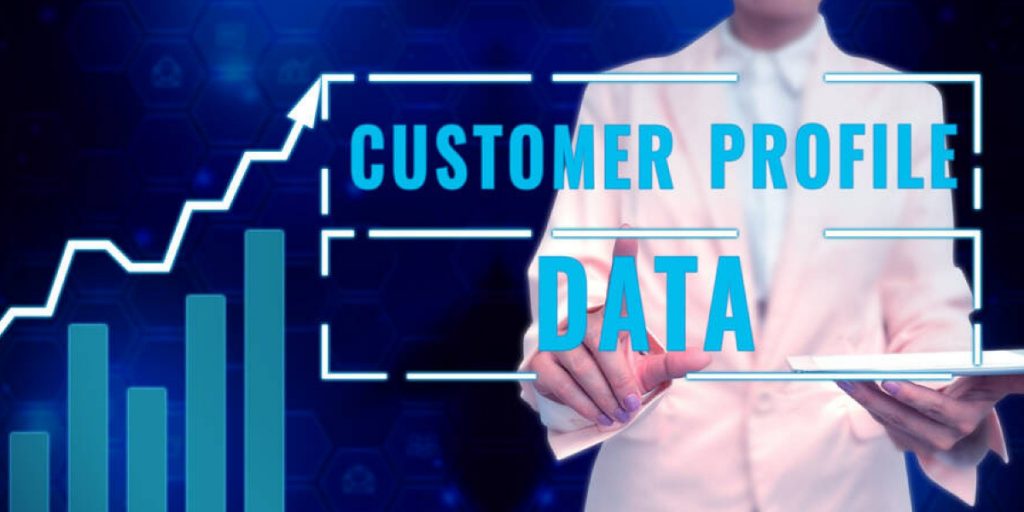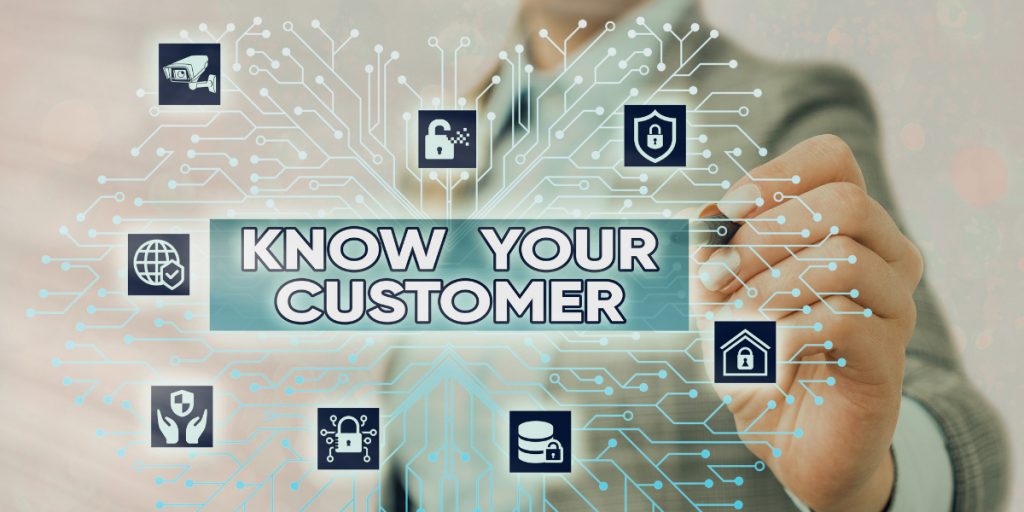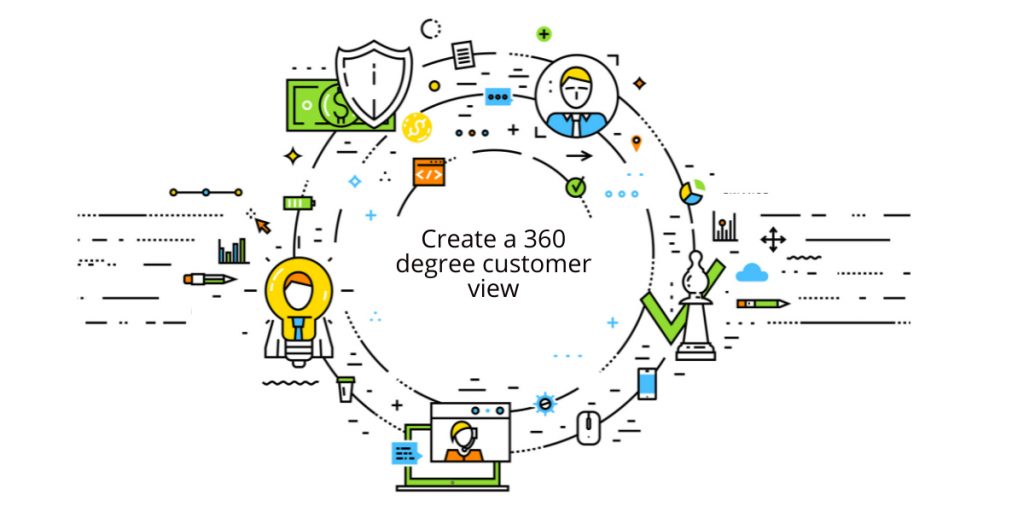Know Your Customer (KYC) is a process that has been adopted by many businesses around the world for many years. It helps organisations to identify and verify their customers, as well as assess any potential money laundering or terrorist financing risks. This article will provide an overview of KYC, with particular focus on the five stages of KYC. We will look at what each stage entails and how this process can protect both businesses and their customers from fraudulent activities.
Stage 1: Customer Identification Program (CIP)
The first stage of any successful customer onboarding process is the Customer Identification Program (CIP). This program is designed to help identify and verify a new customer’s identity before they can begin doing business with your company. The main goal of CIP is to protect both your business and your customers from financial fraud, money laundering, and other illegal activities.
What is CIP in KYC?
The Customer Identification Program (CIP) is a crucial aspect of the Know Your Customer (KYC) program. It is the first step in establishing a relationship with a customer and understanding their financial background. CIP involves gathering information about customers to verify their identity, including name, address, date of birth, and government-issued identification.
The main objective of CIP is to prevent money laundering or fraudulent activities by identifying customers who may be using false identities or engaging in illegal activities. By implementing CIP practices, financial institutions can reduce the risk of financial crimes and comply with legal regulations.
To comply with CIP requirements, financial institutions must collect and verify basic information about each customer before opening an account or starting a business relationship. This includes obtaining personal identifiable information (PII), performing risk assessments based on factors such as transaction amounts and frequency, and monitoring transactions for suspicious activity.
The legal requirements for CIP in KYC
The legal requirements for CIP in KYC dictate that financial institutions must collect specific information from their customers during account opening processes. This information includes the customer’s name, address, date of birth, and government-issued identification number such as passport or driving license. Additionally, financial institutions must verify this information through reliable sources such as credit bureaus or public databases.
The penalties for non-compliance with CIP can be significant, including hefty fines and reputational damage for financial institutions.
The objectives of CIP in KYC
The banking industry has been under increasing scrutiny in recent years, with regulators and lawmakers alike calling for more stringent measures to prevent illicit activities such as money laundering and terrorism financing. One of the key tools that banks have at their disposal is the Customer Identification Program (CIP), which forms a crucial part of the Know Your Customer (KYC) framework.
The objectives of CIP are twofold: firstly, it enables banks to verify the identity of their customers in order to comply with anti-money laundering (AML) regulations. This involves collecting information such as name, address, date of birth and identification numbers such as passport or driver’s license details. Secondly, CIP helps banks assess the risk posed by each customer by looking at factors such as occupation, source of funds and transaction history. This allows them to identify potentially suspicious activity and take appropriate action.
The components of CIP in KYC
The components of CIP in KYC include customer identification, verification, and risk assessment. The customer identification process involves obtaining basic information about the customer, including their name, address, date of birth, and identification number such as a passport or driver’s license. Verification is then carried out to ensure that the provided information is accurate and valid.
Once the customer has been identified and verified, a risk assessment is conducted to determine their potential for illegal activities. This includes analysing their transaction history for any suspicious activity or links to known criminal organisations.
Different types of identification documents that customers can present for CIP
There are several types of identification documents that customers can present for CIP purposes, including passports, driver’s licenses, national identity cards, and military IDs. Passport remains one of the most commonly accepted forms of ID due to its high level of security features such as biometric information and machine-readable zones. In some cases, a combination of documents may be accepted if they provide sufficient information about a customer’s identity.
It is important to note that financial institutions must comply with strict guidelines when accepting identification documents for CIP purposes.
The role of technology in CIP
The role of technology in CIP has significantly improved customer identification processes. In today’s digital age, financial institutions use various technologies such as biometric authentication tools like facial recognition or fingerprinting scanners, as well as data analytics software and machine learning algorithms to identify potential risks and detect suspicious transactions. This technology allows banks to collect customer data from multiple sources automatically and analyse it quickly for any discrepancies or anomalies. Moreover, transaction monitoring systems can assist in detecting unusual patterns of behaviour involving clients’ accounts.
The importance of ongoing monitoring of customers for potential risk factors
Ongoing monitoring allows you to keep track of changes in your customer’s profile that may indicate potential risks. For example, if a customer suddenly starts making large transactions or operates in an industry that has higher than average risk factors, you can investigate these changes further and take appropriate action if necessary.
By keeping an eye on your customers’ activity over time, you can also detect any suspicious behaviour that may be indicative of money laundering or terrorism financing. This can help protect both your business and the wider community from financial crime.
The consequences of non-compliance with CIP regulations
Non-compliance with CIP regulations can lead to severe consequences for financial institutions. The most significant consequence of non-compliance with CIP regulations is fines and penalties. Financial institutions could face hefty fines from regulatory bodies, which can impact their bottom line significantly. Moreover, non-compliance can cause reputational damage that may affect a company’s customer base negatively.
The challenges of implementing an effective CIP program
Implementing an effective Customer Identification Program (CIP) can be an uphill task for most organisations. While the primary aim of CIP is to identify customers and reduce fraud, implementing it can be quite challenging. One of the major challenges faced by businesses is cost. Implementing a CIP program requires investment in technology infrastructure, staff training, and resources which may not come cheap.
Another challenge faced when implementing a CIP program is complexity. A well-designed CIP program should cover various aspects such as identity verification, risk assessment and monitoring for suspicious activity. This means that businesses must ensure that they have all the necessary components in place to make their CIP programs effective. Additionally, data privacy concerns also arise when implementing a CIP program since personal information such as passport and driver’s license numbers are collected during the process.
Best practices for designing and implementing a CIP program, including staff training, risk-based customer due diligence, and regular program reviews and updates.
Designing and implementing a successful CIP program requires careful planning and consideration of best practices.
One key element is staff training, which should include regular updates on regulatory changes, methods for verifying customer identity, and how to handle suspicious activity. It’s also important to define roles and responsibilities within the CIP team to ensure everyone understands their role in meeting compliance standards.
Another consideration is implementing risk-based customer identification procedures. This means analysing customer information such as transaction history, type of account, location, and other factors that may indicate potential risk or suspicious activity. By taking a risk-based approach, institutions can better allocate resources towards customers who require more attention while minimising unnecessary burdens on low-risk customers.
Stage 2: Customer Due Diligence (CDD)
The second stage of the onboarding process is Customer Due Diligence (CDD), which is a crucial part of onboarding for any financial institution. At this stage, the institution is required to verify the identity of their customer and assess any potential risks involved in doing business with them. CDD helps to ensure that the institution complies with anti-money laundering (AML) and counter-terrorism financing (CTF) regulations.
During Stage 2, institutions are required to obtain information about their customers’ identities, including name, address, date of birth and identification documents such as passports or driver’s licenses. Institutions must also conduct ongoing monitoring of their customers’ transactions to detect any suspicious activity. This includes monitoring for unusual transaction patterns or activities that are inconsistent with a customer’s profile.
The goal of CDD is to identify high-risk customers who may be involved in money laundering or terrorist financing activities.
Definition and Importance of CDD
Customer Due Diligence (CDD) is a process that involves verifying the identity of customers and evaluating the risks associated with them. It is a vital component in anti-money laundering (AML) and counter-terrorism financing (CTF) efforts, as it helps to prevent financial institutions from being used for illegal activities. CDD procedures involve gathering information about customers, such as their name, address, date of birth, and occupation. This information is then analysed to identify any potential risks associated with the customer.
The importance of CDD cannot be overstated. Financial institutions are often targeted by criminals seeking to launder money or finance terrorist activities. By implementing robust CDD procedures, institutions can reduce their exposure to these risks and protect themselves from regulatory and reputational harm. In addition, conducting thorough due diligence on customers can help organisations build stronger relationships with them by demonstrating a commitment to integrity and transparency.
An overview of the regulatory framework around CDD
The regulatory framework around CDD is in place to prevent money laundering, terrorist financing, and other criminal activities. In most countries, financial institutions are required to comply with these regulations.
There are different types of CDD that financial institutions may use depending on the level of risk associated with a customer. Standard CDD involves verifying a customer’s identity through official documents such as passports or driver’s licenses. Enhanced CDD involves more thorough due diligence measures for high-risk customers such as politically exposed persons (PEPs) or those from sanctioned countries.
In addition to standard and enhanced CDD, there is also simplified due diligence (SDD). This type of due diligence applies to low-risk customers where only basic information is collected.
CDD Procedures
The CDD process typically involves several steps, including the collection and verification of customer information, identification of beneficial owners, and assessment of potential risks posed by each customer.
The documentation required for CDD may vary depending on the nature of the business relationship and the type of customer involved. Some examples of common documentation include government-issued identification documents such as passports or driver’s licenses, proof of address such as utility bills or bank statements, and financial records such as tax returns or bank statements. In some cases, additional due diligence may be required for higher-risk customers or transactions.
It is important for businesses to understand the importance of implementing an effective CDD process to avoid legal and regulatory compliance issues.
CDD Challenges and Risks
While CDD is critical in preventing financial crimes, organisations often face several challenges and risks when implementing these procedures.
One significant challenge that companies encounter while performing CDD is false identification documents submitted by customers. Fraudulent documents can be challenging to identify, particularly if they are sophisticated forgeries. Organisations must have a robust authentication process in place to verify the authenticity of customer identification documents without compromising their privacy or data security.
Another risk associated with CDD implementation is the potential for data breaches and cyber-attacks. The volume of sensitive information collected during the verification process makes it a prime target for hackers looking to steal data for criminal purposes.
CDD Best Practices
With the increasing complexity of compliance laws, CDD has become more critical than ever before. Organisations need to implement best practices to ensure they comply with regulatory requirements while minimising potential financial and reputational losses.
One of the best practices for CDD is the use of technology to automate the process. Technology can help organisations streamline their CDD procedures by automating data collection, analysis and reporting functions. Automation ensures consistency in processes, reduces errors and frees up employees from manual tasks so they can spend more time on high-value activities such as risk assessment and decision-making.
Another important aspect of CDD best practices is conducting regular training for employees. Employees are an organisation’s first line of defence against money laundering and terrorist financing activities.
In order to achieve effective CDD, collaboration with other organisations is crucial to share information and improve risk assessment. Here are some best practices for collaborating with other organisations in CDD.
Firstly, establish partnerships with reputable organisations that have a similar goal of combating financial crimes. This can include government agencies, law enforcement agencies, and industry associations. By collaborating with these partners, you can leverage their expertise and resources in identifying potential risks associated with customers.
Secondly, ensure that appropriate agreements are in place when sharing information with these partner organisations. These agreements should clearly outline the purpose of sharing information, the scope of data being shared and how it will be managed. It’s important to comply with any legal requirements around privacy regulations when exchanging customer data.
CDD and KYC Compliance
CDD and KYC compliance are two essential concepts that go hand in hand. CDD, or Customer Due Diligence, is an important part of the broader framework of KYC compliance. This process involves identifying and verifying the identity of customers, assessing their risk level and ensuring that they are not involved in any suspicious activities.
In the context of KYC compliance, CDD serves as a critical step towards building a comprehensive understanding of the customer. It enables organisations to create risk profiles for each customer, which helps them identify any potential vulnerabilities or red flags early on in the relationship. Without CDD, businesses would be unable to effectively assess their clients’ risk level and adequately mitigate any potential threats.
Furthermore, CDD plays a crucial role in maintaining compliance with various regulatory requirements such as AML (Anti-Money Laundering) and Counter-Terrorist Financing (CTF).
The Future of CDD
The world of customer due diligence (CDD) is constantly evolving, with emerging trends that promise to revolutionize how financial institutions verify the identities of their clients. One such trend is the use of biometric authentication, which involves using unique physical characteristics such as fingerprints and facial recognition to confirm a person’s identity. This technology offers a more secure and convenient way of authenticating customers, reducing the risk of fraud, and improving customer experience.
Another emerging trend in CDD is the use of blockchain technology. With its decentralised architecture, blockchain has the potential to enhance transparency and trust in financial transactions while ensuring data privacy. By storing customer information on a distributed ledger that is tamper-proof, it becomes easier for financial institutions to verify identities and manage risks associated with money laundering or terrorism financing.
Artificial intelligence (AI) also holds great promise for the future of CDD.
Stage 3: Risk Assessment
As part of the Know Your Customer (KYC) process, financial institutions and other regulated entities must carry out a risk assessment on their customers. Stage 3 of the KYC process is dedicated to this important task. The purpose of risk assessment is to identify and evaluate potential risks associated with providing services or products to a particular customer or group of customers.
The first step in conducting a risk assessment is gathering information about the customer’s business, industry, and reputation. This information can be obtained through various sources such as public records, news articles, and third-party databases. Once this information has been collected, it is analysed to determine the level of risk associated with doing business with that particular customer.
Based on the results of the analysis, a risk rating is assigned to each customer which helps organisations make informed decisions about whether or not to onboard them.
The basic principles of risk assessment
The basic principles of risk assessment involve identifying potential risks, analysing their likelihood and impact, developing strategies for managing those risks, and monitoring those strategies over time.
One key principle in risk assessment is understanding the nature of the business relationship. Is it a long-term partnership or a one-time transaction? What types of products or services will be exchanged? Another important factor is the customer’s profile. Who are they, what is their reputation within their industry, and what type of transactions have they engaged in previously? These factors can help financial institutions determine which types of risks may be present and how best to mitigate them.
Identifying Risk Factors
Several risk factors must be considered during the KYC process, including legal, identity, financial, reputational and geographic risks. Legal risks arise when dealing with clients who have been involved in illegal activities such as money laundering or terrorism financing. Identity risks occur when there are doubts about a customer’s true identity or if they have provided fraudulent documents.
Financial risks refer to whether a client has enough funds for the proposed transaction and if their source of income can be verified. Reputational risk arises from dealing with individuals or entities whose actions could negatively impact an organisation’s image.
Risk Scoring Methodologies
There are various risk scoring methods that can be used during the KYC process, such as the risk matrix, risk rating, or probability.
One popular method used in risk assessment is the risk matrix. This method involves plotting risks on a two-dimensional chart that considers both their likelihood and impact. The likelihood of a certain event occurring is plotted on one axis, while the impact of that event is plotted on another axis. By assessing the likelihood and impact of different risks, organisations can prioritize their response accordingly.
Another commonly used method for risk assessment in KYC processes is the risk rating approach. This approach assigns a rating to each risk identified and allows an organization to prioritize its response in order to mitigate the most critical risks. Finally, organisations may consider using the probability-impact matrix for assessing their risks. This approach allows an organization to assess the likelihood and impact of each risk individually, and then assess these against each other to prioritize its response.
Enhanced Due Diligence
Enhanced Due Diligence (EDD) is a process used by financial institutions and other businesses to mitigate the risks associated with higher-risk customers. This type of due diligence goes beyond regular customer due diligence procedures and involves a more in-depth analysis of the customer’s risk profile. EDD helps businesses identify potential threats such as money laundering, fraud, or terrorist financing.
To conduct EDD, businesses gather additional information about the customer’s background, including their source of funds, business dealings, personal relationships, and any criminal history. They also assess the nature of the business relationship with the customer to determine if it poses any elevated risks. By analysing this information in detail, businesses can better understand their customers’ risk profiles and make informed decisions about whether to continue doing business with them.
The type of information used in EDD includes the customer’s background and history, financial statements, transactional data, and any relevant news articles or public records related to the individual or business. This information helps companies assess the likelihood of engaging with a potentially risky customer and determine whether or not they should proceed with a business relationship. Additionally, the use of EDD can help companies comply with regulatory requirements around anti-money laundering (AML) and know-your-customer (KYC) practices.
Technology and Risk Assessment
Risk assessment is a critical aspect of the KYC (Know Your Customer) process. It helps businesses to identify and mitigate potential risks associated with customers. With the increasing number of regulatory requirements, it has become challenging for businesses to conduct risk assessments manually.
Thankfully, technology has come to the rescue by providing various automation tools that can improve risk assessment accuracy. One of these technologies is Global data’s own Caspar. Which can be used to analyse vast amounts of data quickly and accurately, identifying discrepancies in customer details that could indicate potential risks. This not only makes the process faster but also more thorough in identifying risks that may have been missed previously.
KYC Compliance and Risk Management
KYC compliance and risk management are two of the most critical aspects that businesses need to consider as they undertake the Know Your Customer (KYC) process. In today’s regulatory environment, organisations operating in various industries must comply with legal and regulatory requirements that govern customer identification, verification, and monitoring.
The KYC process is not only a legal obligation but also a practical business requirement for mitigating risks associated with fraud, money laundering, terrorist financing, and other financial crimes. Proper KYC procedures enable businesses to identify their customers accurately and assess their suitability to enter into business relationships.
To ensure proper KYC compliance, businesses need to follow specific legal and regulatory requirements.
The legal and regulatory requirements that must be followed during the KYC process can vary depending on the jurisdiction and industry involved. However, some common requirements include verifying the identity of each customer through government-issued documents such as passports or driver’s licenses; conducting ongoing monitoring of customer transactions; and reporting any suspicious activity to relevant authorities. Failure to comply with these requirements can result in serious consequences for both the business itself and its customers.
Stage 4: Ongoing Monitoring
Stage 4: Ongoing Monitoring for KYC is crucial to mitigate potential risks associated with fraudulent activities in the financial sector. Financial institutions need to ensure compliance with Anti-Money Laundering and Know Your Customer regulations by continuously monitoring their customers’ risk profiles. The ongoing monitoring process is one of the final stages of the KYC process, which involves identifying, verifying, and assessing customers’ identities and understanding their financial transactions.
Ongoing monitoring is essential because it provides a means of detecting suspicious activities such as money laundering, terrorist financing, or other forms of financial crimes that may occur after customer onboarding. This process enables organisations to identify any unusual patterns or changes in customer behaviour that may indicate high-risk transactions that could potentially lead to increased regulatory scrutiny. By continually evaluating customers’ risk profiles through ongoing monitoring, organisations can minimize reputational damage and avoid hefty regulatory fines.
The importance of ongoing monitoring for KYC compliance
KYC compliance is essential for any financial institution. The process of Know Your Customer is designed to help organisations verify the identity and assess the risk profile of their customers. However, simply completing KYC checks during onboarding is not enough. Ongoing monitoring of customers’ activities and changes in their circumstances are equally important to maintain a robust KYC program.
Staying on top of their customers’ risk profiles helps organisations identify potential money laundering, terrorist financing, or other illicit activities that may occur after account opening. This means that financial institutions must regularly assess their clients’ transactions against current watchlists and ensure they are compliant with local regulations. By doing so, they can quickly detect suspicious activity and take appropriate action before it’s too late.
In addition to monitoring transactions, ongoing KYC also involves keeping abreast of any significant changes in a customer’s circumstances that could affect their risk profile.
Regulatory requirements for ongoing monitoring
As financial crimes continue to rise, it is essential for the government and financial institutions to work together towards ensuring compliance with regulatory requirements. One of the regulatory requirements is ongoing KYC (Know Your Customer) monitoring. In Australia, this requirement is overseen by AUSTRAC (Australian Transaction Reports and Analysis Centre).
AUSTRAC mandates that financial institutions must conduct ongoing KYC monitoring to detect any changes in a customer’s profile or behaviour that may indicate potential money laundering or terrorism financing activities. This includes regularly reviewing customer information such as identification documents, transaction history, and risk assessments. Failure to comply with these requirements can result in severe consequences such as fines, legal action, damaged reputation and loss of customers.
Non-compliance not only affects the financial institution but also poses significant risks to the economy and society at large.
Types of customer information that should be monitored
As a business, it is crucial to know your customer in order to mitigate risks and prevent fraud. One way to achieve this is by monitoring the type of customer information that should be kept up to date. This includes personal details such as name, address, phone number, email address, and identification documents like passports or driver’s licenses.
Another important area of focus is on customer behaviour. By monitoring their behaviour, you can identify any suspicious activity such as unusual transaction patterns or large amounts of cash deposits. This can help you flag potential money laundering activities and protect your business from becoming involved in illegal activities.
Transaction history is also an essential piece of information for KYC purposes. Keeping track of each transaction that a customer makes allows you to detect any inconsistencies or irregularities in their buying patterns.
Technologies used for ongoing monitoring
In today’s fast-paced business landscape, companies are constantly striving to stay ahead of the curve when it comes to compliance and risk management. One of the most critical aspects of this is keeping up with ongoing Know Your Customer (KYC) monitoring. To do so, many organisations are turning to cutting-edge technologies such as Global Data’s Caspar platform.
Caspar is a powerful tool that enables businesses to conduct ongoing KYC checks on their customers in real-time. It leverages advanced data analytics and algorithms to identify potential risks and flag any suspicious activity. This allows companies to quickly respond to any issues and ensure that they always remain compliant with regulatory requirements.
One of the key benefits of using Caspar is its ability to integrate seamlessly with other existing compliance tools.
Risk-based approach to ongoing monitoring
As the financial landscape evolves, so do the risks. In order to stay ahead of these risks, a risk-based approach is crucial for ongoing KYC monitoring. The importance of a risk-based approach cannot be overstated when it comes to identifying high-risk customers and focusing monitoring efforts appropriately.
In today’s world of complex financial transactions and ever-evolving compliance regulations, choosing a one-size-fits-all approach simply will not cut it. By adopting a risk-based approach to ongoing KYC monitoring, institutions can streamline their processes while ensuring that they are dedicating appropriate resources to those high-risk customers who require more attention.
One key component of this approach is identifying high-risk customers. This can be done by gathering information on factors such as geographical location, transaction history, and customer behaviour patterns. For example, a customer’s interaction with an institution’s services and products can be used as an indicator of risk. The more frequently these interactions occur, the higher the risk of money laundering or other illicit activity.
Another key component of this approach is instituting protocols for monitoring high-risk customers. The goal of these protocols is to ensure that the institution is aware if a customer begins engaging in money laundering or other illicit activities.
Furthermore, institutions must also implement effective screening procedures for all new customers.
This approach is similar to the first approach, in that it uses factors such as geographical location, transaction history, and customer behaviour patterns to determine whether a customer is likely to engage in money laundering or other illicit activities.
Challenges and solutions for ongoing monitoring
Businesses are increasingly turning to ongoing KYC monitoring to ensure that they comply with regulatory requirements and keep their customers safe from fraud and other financial crimes. However, while this approach offers many benefits, it also presents several challenges that businesses must overcome. One of the biggest challenges is data privacy concerns, as companies need to collect and store sensitive personal information about their customers in order to monitor them effectively.
Another challenge that businesses may face when implementing ongoing KYC monitoring is the cost involved. This approach requires significant investment in technology and personnel, which can be a barrier for smaller organisations or those with limited resources. Additionally, businesses may find it difficult to stay up to date with changing regulations and compliance requirements, which can result in penalties or legal action if not addressed promptly.
Despite these challenges, there are several solutions available for businesses looking to implement ongoing KYC monitoring successfully.
In order to address the challenges outlined above, we’ve developed a comprehensive digital KYC solution that is cost-effective and easy for businesses to deploy – regardless of size or budget. Our solution uses a cloud-based architecture to provide an innovative digital KYC platform that allows you to quickly and easily onboard new customers, monitor ongoing KYC compliance, mitigate fraud and other potential risks. By using our solution, you will be able to: create a single customer view, verify customers identities, and conduct KYC checks on-demand and in real time. Offer your customers a better customer experience by reducing the amount of time it takes to complete KYC checks. Reduce risk and facilitate regulatory compliance by conducting ongoing monitoring of customer identities. Help prevent fraud, money laundering and other financial crimes with real-time alerts and monitoring capabilities.
Best practices for ongoing monitoring
Best practices for ongoing KYC monitoring are essential for financial institutions to ensure compliance with regulatory requirements. One of the most critical aspects of KYC monitoring is ensuring data accuracy and completeness. This means that all customer information should be up-to-date, relevant and verifiable. Financial institutions must have a clear understanding of their customers’ risk profiles to identify potential money laundering or terrorist financing activities.
To maintain effective ongoing KYC monitoring, financial institutions need to conduct regular risk assessments. These assessments help identify high-risk customers who require additional scrutiny and due diligence. It’s important to note that a one-size-fits-all approach does not work when it comes to KYC monitoring; thus, each customer’s case should be assessed independently.
Implementing a Customer Due Diligence Program (CDDP) is another best practice for ongoing KYC monitoring in financial institutions. This program should include comprehensive customer identification procedures, including the use of reliable databases that contain information on individuals and companies.
Implementing KYC monitoring systems also helps to ensure regulatory compliance. Financial institutions in many countries are required to report suspicious transactions or money laundering activities to financial intelligence units.
Stage 5: Reporting Suspicious Activities
As financial institutions continue to strengthen their Know Your Customer (KYC) policies, the importance of reporting suspicious activities cannot be overemphasised. In an era where cybercrime is on the rise and fraudsters are becoming increasingly sophisticated, KYC monitoring provides a crucial first line of defence. However, detecting suspicious activities is not enough if they are not reported promptly.
Reporting suspicious activities has become mandatory for banks and other financial institutions as part of their compliance obligations. This means that any activity that appears suspicious or out of the ordinary should be reported immediately to relevant authorities. Failure to report these activities can result in hefty fines and reputational damage for institutions.
To effectively report suspicious activities, it is essential for financial institutions to have clear guidelines in place outlining what constitutes a suspicious activity and who to report it to.
Definition of suspicious activities
To identify suspicious transactions during the KYC process, banks and financial institutions lookout for unusual transactions, inconsistent customer behaviour, and attempts to avoid or circumvent KYC.
Unusual transactions refer to those that are out of the ordinary for a particular customer. For instance, if an individual with an average income suddenly deposits a large sum of money into their account or makes multiple high-value transactions in a short period of time, it could be considered an unusual transaction. Banks often flag such transactions as suspicious activity during the KYC process to prevent any potentially fraudulent activities.
Inconsistent customer behaviour refers to customers who exhibit behaviour that may be contrary to their regular patterns.
Finally, attempts to avoid or circumvent KYC requirements are also considered suspicious activities under these guidelines.
It is important to recognise that actions such as providing false information or using fake identification documents, will be considered suspicious and trigger an investigation. Synthetic fraud attempts are also a growing concern for financial institutions. In these cases, criminals create fake identities by combining real and fabricated personal information in order to obtain credit cards and loans.
Synthetic fraud prevention involves detecting and stopping fraudsters who create fake identities using real or fabricated information. This type of fraud can be difficult to detect because it doesn’t involve stealing someone else’s identity but rather creating a new one from scratch. To prevent synthetic fraud, financial institutions must remain vigilant throughout the entire KYC process. This includes verifying all customer information and conducting thorough background checks on potential clients.
Regulatory requirements for reporting suspicious activity
Regulatory requirements for KYC reporting are an essential part of ensuring financial institutions stay compliant with the law. In Australia, this process is mandated by several laws and regulations, including the Anti-Money Laundering and Counter-Terrorism Financing Act (AML/CTF).
One crucial aspect of KYC reporting is identifying and reporting suspicious activities that may be indicative of money laundering or terrorist financing. Financial institutions must have a robust monitoring system in place to detect any unusual transactions or behaviour patterns among their clients. If suspicious activity is identified, they must report it immediately to AUSTRAC, which is responsible for collecting, analysing, and sharing financial intelligence with law enforcement agencies.
Conclusion: 5 Stages of KYC
In conclusion, KYC is a crucial process in the financial industry that helps to prevent illegal activities. The five stages of KYC – customer identification, customer due diligence, risk assessment, ongoing monitoring, and reporting suspicious activities – are essential to ensure compliance with regulatory requirements. It is necessary for organisations to establish strong KYC policies and procedures to protect their business from potential risks. By following these stages carefully and consistently, financial institutions can maintain a secure environment for their customers and themselves. Therefore, it is highly recommended that companies prioritize KYC as an integral part of their operations to ensure transparency and integrity in all financial transactions.
If you’re a financial institution looking to improve your KYC processes or strengthen compliance measures, consult with our experts today!





